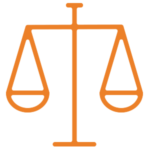Income-Based Repayment
Income-Based Repayment (IBR) is one of several student loan repayment plans available for FFELP and FDLP (Direct) borrowers. IBR establishes a monthly payment amount that looks at your unique situation by considering your income, family size, and federal student loan debt.
You must meet certain criteria in order to qualify for IBR. You can use the Repayment Plan Estimator from the Department of Education to determine whether you may be eligible for this program. If it appears that you’re eligible, the calculator will provide you an estimated monthly payment amount under IBR.
IBR is available only for federal student loans, such as the Stafford, Direct, Grad PLUS, and certain Consolidation loans. It’s not available for Parent PLUS Loans, Direct Parent PLUS Loans, Consolidation loans that include Parent PLUS or Direct Parent PLUS Loans, non-federal student loans, or defaulted loans.
If your loans were disbursed on or after July 1, 2014, without an outstanding balance prior to that date, the repayment term may extend up to 20 years. The repayment term for older loans paid under the IBR plan may extend up to 25 years.
To get started, access a list of your federal student loans by going to the National Student Loan Data System (NSLDS) website. NSLDS can provide information about loans guaranteed by Trellis Company, other guarantors, and the US Department of Education (ED). You’ll also need a copy of your most recently filed federal income tax return. With that information, complete the IBR application form and send it, along with all required documentation, to your loan holders.
Your loan holder will make a final determination of your eligibility for IBR. In some cases, your loan holder may require you to submit alternative documentation of income to determine your IBR eligibility and payment amount — for example, if your Adjusted Gross Income (AGI) is not available from the IRS or your loan holder believes that your AGI does not reasonably reflect your current income.





